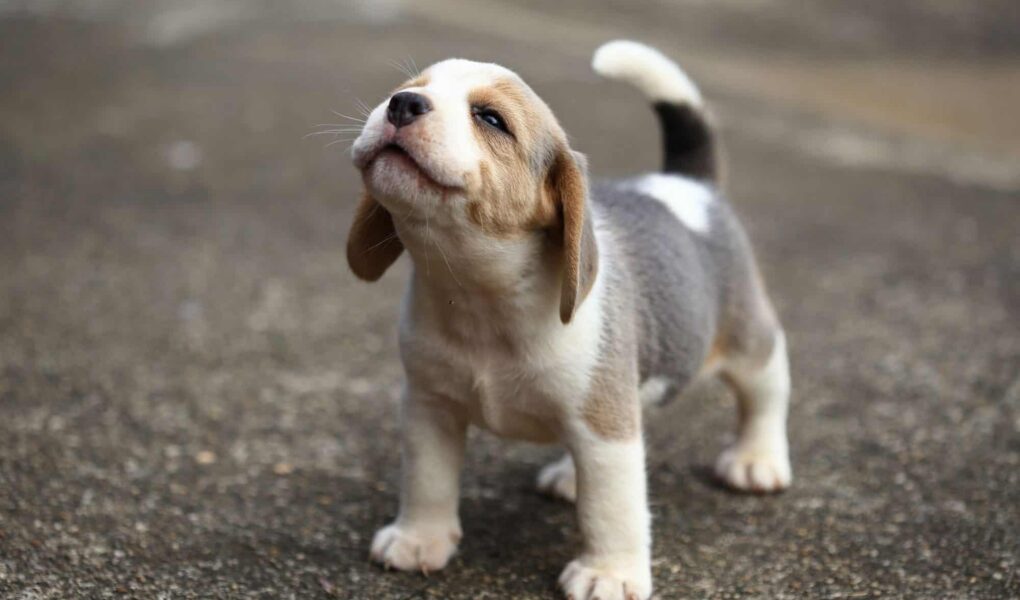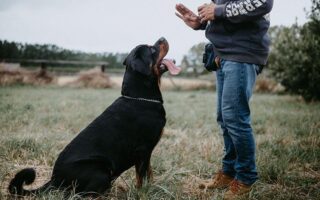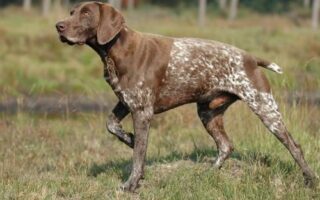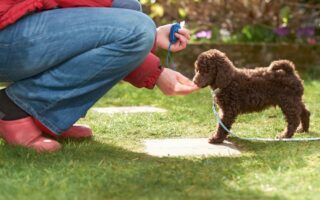Introduction: The Unstoppable Nibbler: Understanding Puppy Biting Behavior
Welcome to the delightful yet chaotic world of puppyhood, where every moment is a blend of joy, curiosity, and, yes, a fair share of nibbles. As any puppy parent will tell you, the innocent curiosity of these little furballs can often manifest in a biting frenzy that leaves shoes, furniture, and fingers feeling the brunt of their enthusiastic explorations. But why do puppies bite, and how can we navigate this playful yet perplexing phase? In this article, we will delve into the instincts and behaviors that drive puppies to chew on everything in sight, offering insights and strategies to transform that teething frenzy into a more manageable—and less chewable—adventure. Whether you’re a seasoned dog owner or a first-time puppy companion, understanding the roots of this biting behavior is the key to fostering a harmonious home where both your pup and possessions can thrive.
Table of Contents
- Understanding the Nature of Puppy Biting and Its Causes
- The Impact of Teething on Your Puppys Behavior
- Effective Strategies to Manage and Redirect Biting Habits
- Creating a Safe and Stimulating Environment for Your Puppy
- Q&A
- In Retrospect
Understanding the Nature of Puppy Biting and Its Causes
Puppy biting is a common behavior that many new pet owners face, often leaving them puzzled and concerned. This instinctive action can stem from several natural causes. Puppies explore their world primarily through their mouths, much like a toddler uses their hands. Teething is one of the primary motivators behind biting, as young dogs experience discomfort from growing teeth. Additionally, they may bite out of boredom or excess energy, seeking to engage in play or release pent-up feelings. They often use their mouths to interact with their surroundings, leading them to gnaw on anything within their reach, from shoes to furniture.
Understanding what drives this behavior can help you redirect your puppy’s energy in more appropriate ways. Consider the following factors contributing to puppy biting:
- Teething: Young teeth can cause discomfort, leading to an urge to chew.
- Boredom: Inadequate stimulation may encourage your puppy to bite.
- Playfulness: Puppies often use their mouths during play to interact with their littermates.
- Attention-Seeking: Sometimes, puppies bite to get their owner’s attention, even if it’s negative.
Recognizing these triggers allows for developing a strategy that includes providing appropriate chew toys, sufficient exercise, and positive reinforcement training techniques. This approach helps in mitigating the biting behavior while enhancing your furry friend’s development and well-being.
The Impact of Teething on Your Puppys Behavior
As your puppy embarks on the teething journey, their once peaceful demeanor may rapidly transform. Teething can cause discomfort and irritability, making them more prone to chewing on anything within reach. This behavioral change is often a natural response as puppies seek relief from the soreness in their gums. Common signs that your pup is experiencing the pangs of teething include:
- Increased chewing on household items
- Excessive drooling
- Restlessness or difficulty settling down
- Gnawing on their own paws or other body parts
To help manage this phase, it’s essential to provide appropriate outlets for their chewing instincts. Opt for teething toys that are designed specifically for puppies, as well as items that are safe and durable. Introducing these alternatives can help redirect their energy and soothe their gums. Consider creating a small table to keep track of toys your puppy enjoys and the items they were found to chew:
| Toy Name | Material | Durability Rating |
|---|---|---|
| Rubber Bone | Rubber | High |
| Cotton Rope | Cotton | Medium |
| Teething Ring | Silikon | High |
Effective Strategies to Manage and Redirect Biting Habits
Managing a puppy’s biting habits requires a combination of patience, training techniques, and redirecting their energy. Start by consistently offering appropriate chew toys whenever you notice your puppy biting furniture or your hands. This will help them identify what is acceptable for them to chew on. Engage in interactive play sessions with toys that encourage healthy biting behaviors and deter them from using their teeth on you or household items. Also, it’s essential to provide positive reinforcement by praising or treating them when they chew on suitable toys. This creates a clear association between good behavior and rewards, encouraging them to choose the right items.
Another effective method is to implement brief time-outs when your puppy bites too hard or chooses an inappropriate item. Immediately stop the play and temporarily remove yourself from the situation. This teaches your puppy that biting leads to the end of fun, prompting them to reconsider their actions. Additionally, consider including regular exercise in their routine to help expend excess energy. A well-exercised puppy is less likely to engage in biting as a method of entertainment. Here’s a quick reference table summarizing these strategies:
| Strategy | Description |
|---|---|
| Redirect with Toys | Offer toys as alternatives to inappropriate biting. |
| Positive Reinforcement | Praise and reward your puppy for chewing the right items. |
| Time-Outs | Remove yourself from interaction after hard biting. |
| Regular Exercise | Incorporate daily activities to reduce pent-up energy. |
Creating a Safe and Stimulating Environment for Your Puppy
Creating a nurturing atmosphere for your puppy is essential in curbing their instinctual desire to explore the world through their mouths. To achieve this, it’s vital to puppy-proof your home. This can be done by removing anything that could potentially harm them or spark their curiosity in a hazardous way. Here are a few key steps to consider:
- Secure cords and cables to avoid chewable hazards.
- Store small items like coins, batteries, and knick-knacks out of reach.
- Use baby gates to limit access to certain areas.
- Invest in chew-proof toys to redirect their biting behavior.
In addition to safety, creating an engaging environment will stimulate your puppy mentally and physically. Providing a variety of interactive toys can keep them occupied and help expel pent-up energy. You might want to rotate their toys every week to keep their interest piqued. Here’s a simple guide to types of stimulating toys:
| Type of Toy | Benefits |
|---|---|
| Chew Toys | Helps with teething and keeps jaws strong. |
| Puzzle Feeders | Encourages problem-solving and slows down eating. |
| Fetch Toys | Promotes exercise and bonding with you. |
| Comfort Toys | Provides security and comfort during alone time. |
Q&A
Q&A: Understanding and Managing Puppy Biting
Q1: Why do puppies have a tendency to bite everything?
A1: Puppies, much like toddlers, explore their worlds through their mouths. Biting is a natural behavior that helps them learn about their environment. Additionally, teething can cause discomfort, prompting them to gnaw on various items, just as a baby seeks relief in biting or chewing.
Q2: Is puppy biting a sign of aggression?
A2: Not typically. For most puppies, biting is a playful behavior rather than an aggressive one. Puppies often engage in playful nipping when they’re excited or trying to beckon their humans to join in on the fun. However, it’s important to differentiate between normal play and aggressive biting, characterized by growling or unprovoked attacks.
Q3: How can I tell if my puppy is playing or being aggressive?
A3: Watch their body language! A playful puppy will have relaxed ears, a wagging tail, and a bouncy stance. Conversely, an aggressive puppy may have stiff body language, a lowered tail, and a fixed gaze. If the biting hurts or escalates quickly, it’s time to reassess the play dynamics.
Q4: What strategies can I use to curb my puppy’s biting behavior?
A4: Here are some effective strategies:
- Redirection: When your puppy starts to bite, offer them a suitable chew toy as an alternative.
- Socialization: Allow them to interact with other puppies in controlled environments where they can learn bite inhibition.
- Training Commands: Teach “gentle” or “no bite” commands to signal that biting is not acceptable.
- Time-outs: If they continue to bite during play, gently remove yourself from the interaction for a brief period. This helps them learn that biting leads to the end of fun.
Q5: What types of toys are best for teething puppies?
A5: Look for soft rubber toys, rope toys, or frozen chew toys specifically designed for teething puppies. Some pet owners also swear by frozen cloths or wet towels that soothe sore gums while providing a satisfying gnawing experience.
Q6: At what age will my puppy stop biting everything?
A6: The puppy biting phase typically peaks around three to five months of age but usually begins to decrease as they mature, normally transitioning into young adulthood. Consistent training and redirection play key roles in this process, so patience and attention are your allies.
Q7: Are there any behaviors that I might accidentally encourage?
A7: Yes, accidental encouragement can happen, especially through playful roughhousing. If your puppy bites your hands or clothing during play, refrain from reacting with excitement or laughter, which may signal that biting is acceptable. Instead, respond calmly and redirect their energy to a toy.
Q8: When should I consult a professional about my puppy’s biting?
A8: If your puppy’s biting appears unusually aggressive, leads to injuries, or doesn’t improve with standard redirection techniques, it might be wise to consult a professional dog trainer or a veterinarian. They can provide guidance tailored to your puppy’s specific needs.
Exploring the complexities of puppy biting can be enlightening. Remember, this is a phase that reflects a puppy’s curiosity and developmental stage. With training and understanding, that biting behavior can be transformed into a pathway for bonding and joyous play!
In Retrospect
navigating the world of a puppy’s curious, biting phase can be both a delightful and challenging experience. While their enthusiasm for exploring the world with their teeth can lead to a few frayed nerves and chewed slippers, understanding their behavior is paramount to fostering healthy habits. By providing the right outlets for their energy and learning to redirect their biting instincts, you can transform this energetic phase into one of bonding and growth. With patience, consistency, and a sprinkle of creativity, you can not only protect your belongings but also nurture a well-mannered companion. Remember, every bite is just a step on the journey toward a lifelong friendship. Embrace this playful part of puppyhood, and soon enough, those little bites will give way to gentle nibbles of love.



